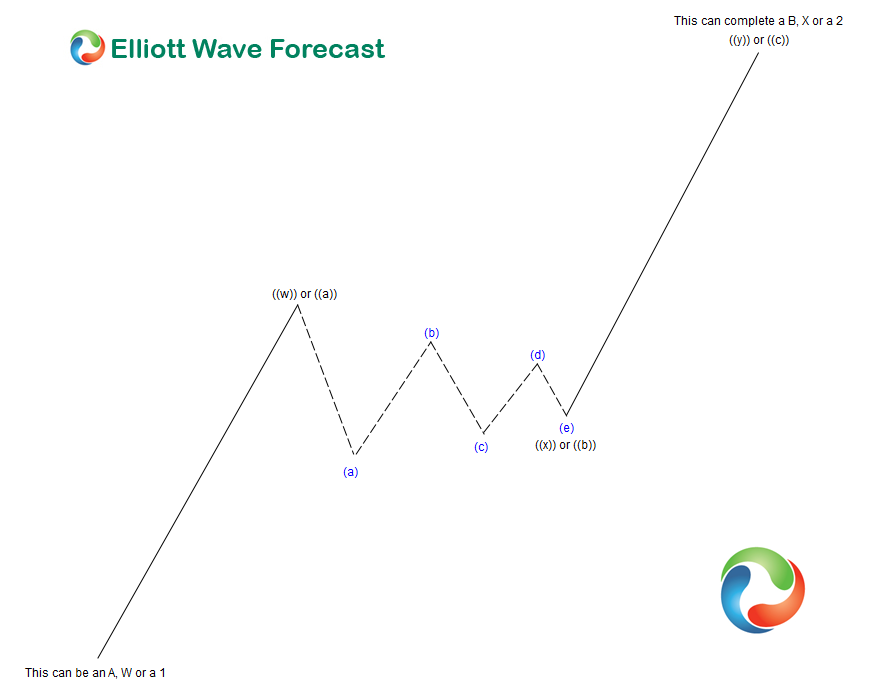Elliott Wave Theory Structure : Double Three with a Contracting Triangle in the connector Wave B or X
As mentioned here before double three structures are common to see in the market and as it has been pointed out before they can also be the Elliott wave formation that a particular market instrument is trending in the larger degrees and time frames since some markets fail to display an impulsive Elliott wave count. With that said these structures also may be seen in any time frame and degree. In the graphic below is a bullish example which can be applied inversely for a bearish market condition.
As for the double three move in the graphic, the leading solid line can represent a few things. Either a wave ((w)) or ((a)) of a larger degree B, X or a wave 2 . This leg up may be subdivided as a zig-zag. It can also be a 7 swing w-x-y double three itself. An initial leg of a cycle will never be a stand alone triangle. Of note the same can be said of a wave 2 as it will never be a stand alone triangle structure. Continuing on into the dotted line after wave ((w)) or ((a)) ends, the wave ((x)) or ((b)) in the graphic may be anything such as a flat, zig-zag, double or triple three structure.
For purposes of this article we are showing a common connector wave which is the contracting triangle. The first leg in the (a) should be the three largest swings in the structure. At the end of the wave (a) that will represent the low point of the triangle. When this small cycle ends it will do three more swings the opposite direction in (b). At this point the wave (a) and (b) will show the low and high points of the rsi indicator reading as well as low and high points in price with the wave (c), (d) & (e) contracting smaller each swing in both rsi and price until it reaches it’s terminal point as pictured at the end of the dotted line and ends the corrective cycle in the larger degree wave ((x)) or ((b)).
Afterward & lastly the market resumes the previous trend in leg ((y)) or ((c)) in the solid line. This can continue on up into the next equal legs-1.236 extension area of the preceding leg ((w)) or ((a)). I hope you found this of help as what to look for in a contracting triangle connector wave.
Thanks for looking and feel free to come visit our website and take a trial subscription and see if we can be of help.
Kind regards & good luck trading.
Lewis Jones of the elliottwave-forecast.com Team
Back
